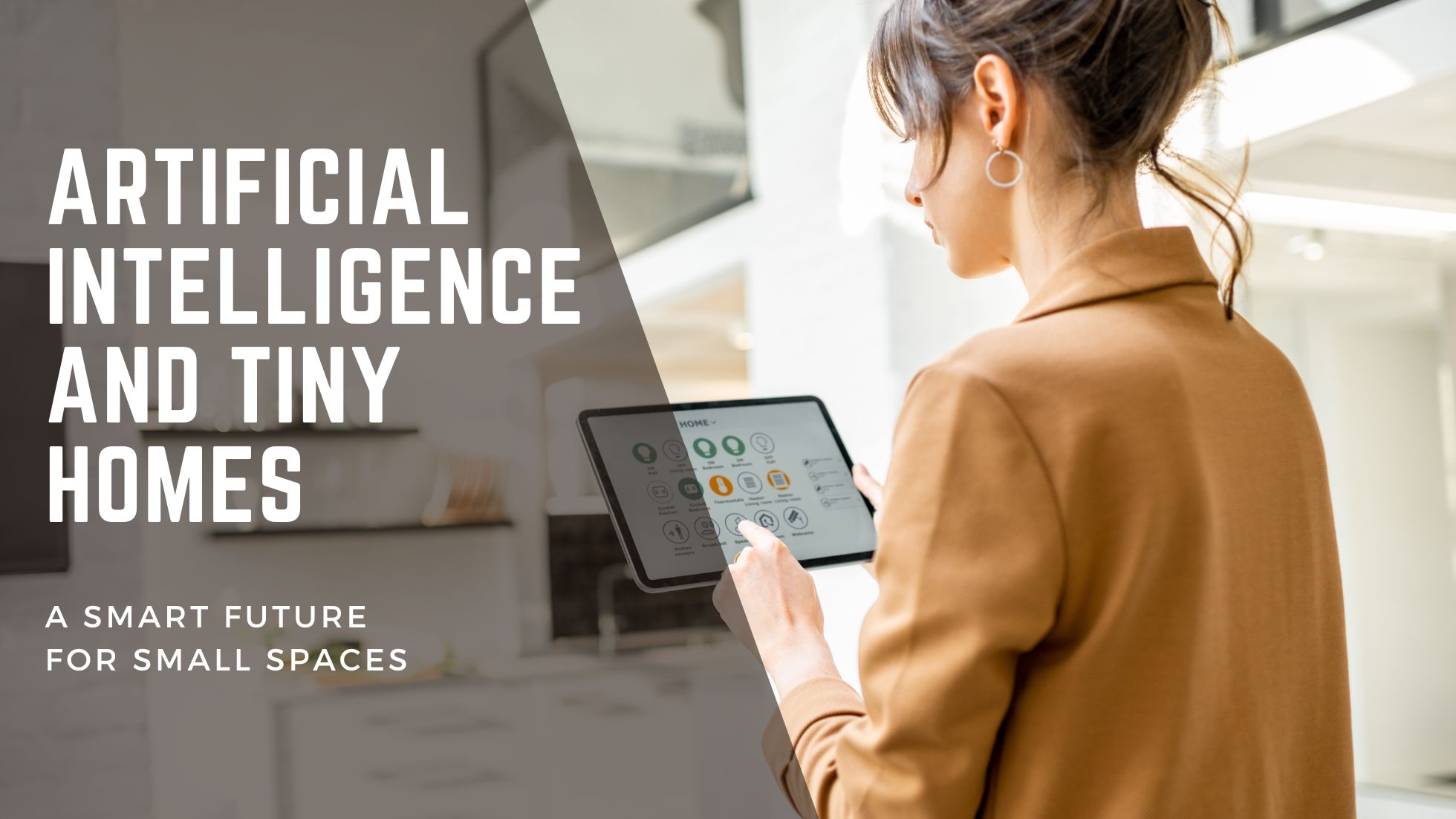
As artificial intelligence (AI) becomes increasingly integrated into our everyday lives, it’s also making waves in the tiny home movement. While tiny homes are known for their compact and minimalist design, AI is helping maximize efficiency, comfort, and sustainability within these small spaces. Whether you’re living in a stationary tiny home or one on wheels, here’s how AI shapes the future of tiny home living and the practical AI applications that can transform your lifestyle.
1. Smart Home Automation
AI is at the heart of smart home automation systems, allowing homeowners to easily manage every aspect of their homes. This automation becomes even more valuable in a tiny house because it helps optimize limited space and resources.
Sample AI Applications:
- Google Nest Thermostat: This smart thermostat learns your schedule and adjusts heating and cooling to reduce energy usage.
- Amazon Alexa or Google Assistant: Voice-controlled AI assistants that manage lighting, security systems, and even your coffee maker.
- Smart Plugs (TP-Link, Wemo): These devices allow you to control appliances through voice commands or remotely via smartphone apps, ideal for saving energy and preventing overuse.
2. Energy Efficiency and Sustainability
AI enhances sustainability by monitoring energy consumption and making real-time adjustments to minimize waste. This is particularly important for off-grid tiny homes, which often rely on solar energy and other renewable sources.
Sample AI Applications:
- Tesla Powerwall: AI-driven battery storage system that manages the energy generated by solar panels, ensuring the home stays powered even during cloudy days or nighttime.
- Sense Energy Monitor: Tracks energy usage patterns and identifies inefficient appliances, helping homeowners make smarter energy choices.
- Netatmo Smart Thermostat: Designed to work with renewable energy systems, it learns your routines and adjusts the temperature based on occupancy, weather, and time of day.
3. Space Optimization through AI-Driven Design
Maximizing space is key in tiny homes, and AI can help design the perfect layout. Through 3D modelling and machine learning algorithms, AI-driven design tools can suggest creative solutions that optimize functionality and comfort in small spaces.
Sample AI Applications:
- RoomSketcher: An AI-powered design tool that lets you create 3D floor plans and visualize how different layouts would look in your tiny home.
- Homestyler: AI-powered software that helps homeowners experiment with furniture layouts and decor to make the best use of their space.
- Modsy: Uses AI to create virtual designs for any room, offering practical suggestions for maximizing space and incorporating multifunctional furniture.
4. AI in Construction and Prefabrication
In the world of tiny homes, prefabrication is becoming more popular, and AI is playing a crucial role in making the building process faster, cheaper, and more precise. AI-driven construction tools help reduce waste and increase efficiency, making tiny home buildings more sustainable.
Sample AI Applications:
- ICON 3D Printing Technology: AI is used to build tiny homes with precision, reducing construction waste and speeding up the building process.
- Branch Technology: Combines AI and 3D printing to create prefabricated modular structures, allowing faster, more eco-friendly home builds.
- Autodesk BIM 360: AI software used in the construction industry to optimize building processes, reduce errors, and predict future maintenance issues.
5. Predictive Maintenance and Smart Monitoring
With space at a premium in tiny homes, there’s little room for unexpected breakdowns or maintenance issues. AI can help by monitoring systems like plumbing, electrical, and HVAC, identifying potential problems before they become significant issues.
Sample AI Applications:
- Flume Smart Water Monitor: Tracks water usage in real-time and alerts you to leaks, preventing costly water damage in a small home.
- Haven IAQ: An AI-powered air quality monitor that tracks pollutants and adjusts ventilation to keep the air inside your tiny home fresh and safe.
- Google Nest Protect: A smart smoke and carbon monoxide detector that uses AI to alert homeowners before a crisis, improving overall safety.
Final Thoughts
As the tiny home movement continues to grow, integrating AI offers significant benefits in terms of efficiency, sustainability, and convenience. From smart home automation to energy-saving solutions and AI-driven construction, the fusion of AI and tiny homes creates smarter, more livable small spaces. Whether you’re already in a tiny home or planning to build one, leveraging AI technologies will help you get the most out of your tiny living experience, both now and in the future.
